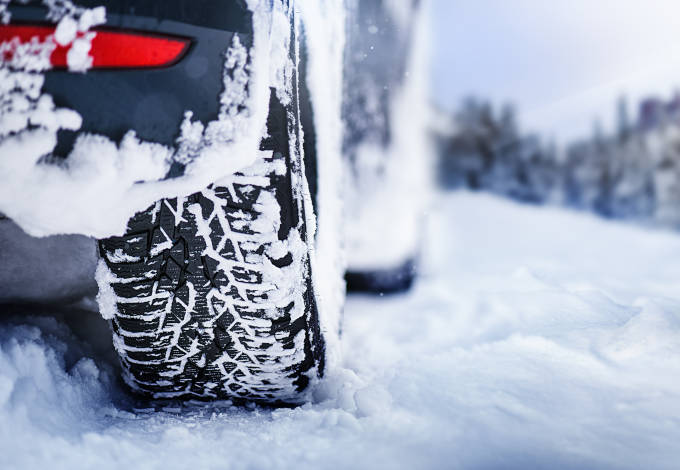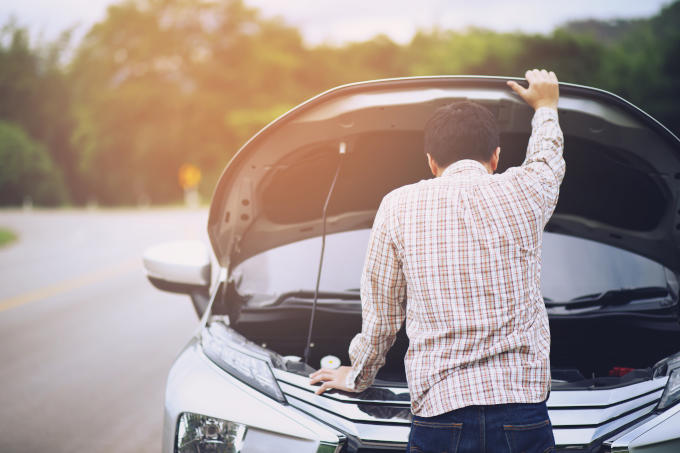Now that the kids are back in school, more cars will be on the road in the morning and afternoon. Whether you're a commuting college student or a busy parent, it's important to make sure that your car is in perfect condition before hitting the road.
At least 32,000 people are killed by car accidents each year, and two million are injured. A lack of car maintenance contributes to the number of car crashes. Don't be part of this statistic--keep an eye on your car and take it to a mechanic if you sense any problems.
Don't know what to look for? Here are 10 back to school safety tips for drivers to ensure your car runs smoothly:
1. Replace Your Brakes
Faulty brakes make it harder for your car to stop. This makes it more likely for you to rear-end another car. If the car in front of you comes to a quick stop, your brakes may not be able to stop your car fast enough, causing a preventable collision.
There are a few causes of brake failure, all of which can be easily fixed by a mechanic. Leaks in your brake lines allow brake fluid to escape, preventing your brakes from performing properly. The Antilock Brake System (ABS) can also fail, making a collision more likely.
Your brake pads and discs deteriorate over time. Once they get worn out, your vehicle won't be able to quickly come to a stop.
You should get your brake system maintained every 30,000 miles. Replace your brake system every two years to guarantee proper functionality.
2. Check the Battery
If you're driving your kids to school, you know that there'd be nothing worse than walking to your car in the morning only to find that the battery is dead. You'd have to get someone to jump your car or you'd have to replace the battery entirely. Unfortunately, a dead battery is a common problem--batteries only last three to five years.
When you notice the low battery light come pop up on your dashboard, don't ignore it. You should also try to remember to turn the headlights off before you leave your car in order to prevent the battery from draining.
Many batteries will die unexpectedly, and that's why some drivers prefer to change their battery every four years just to be safe.
3. Maintain Your Tires
A flat tire can put a damper on anyone's day, but it can also be dangerous. Checking your tire pressure frequently is an essential part of back to school driving safety.
An over-inflated or under-inflated tire can cause a tire blowout. This is highly dangerous, as you'll lose the ability to steer your vehicle properly.
If you notice that your tires are smooth with little tread, that's a sign that your tires should be replaced. Bald tires prevent your tire from gripping the roads--your car won't be able to brake properly, especially in the rain and snow. In addition to checking your tire pressure and tread, you should also get your wheels realigned, as poor alignment can cause bald tires.
4. Check Your Lights
You might not notice when one of the lights on your car is out, but other drivers do. Have someone stand outside your car while you test your headlights, taillights, brake lights, reverse lights and turn signals.
It's hard to see at nighttime with a broken headlight, and everyone else on the road can't see you either. Driving with a turn signal that doesn't work can also increase the chance of an accident, as drivers won't know that you're making a turn or lane change.
5. Replace Your Windshield Wipers
When you think of back to school safety, you might not think about your windshield wipers. It's already hard to see when driving in the rain, but if your windshield wipers are worn out, it can be even more difficult. Windshield wipers that start to leave streaks on your windshield need to be replaced.
Don't forget to check your windshield wiper fluid and refill it when necessary. Having windshield wipers that are able to clear your windshield effectively can increase your visibility and reduce the chance of an accident.
6. Change Your Air Filter
You should replace your car's air filter every 12,000 to 15,000 miles. A dirty filter can lead to additional problems with your car and engine. Even small specks of dirt can enter the engine from the air filter, causing expensive damage to the engine.
Changing your air filter increases your car's gas mileage and can even make your engine last longer. A quick ten-minute replacement at the mechanic can save you a lot of cash in the future.
7. Get a New Fuel Filter
Replacing your fuel filter is another way you can save money while increasing your back to school driving safety. The fuel filter is designed to prevent debris from getting into the gas tank and ensuring that your car runs smoothly.
Too much debris can clog your fuel filter, resulting in damage to the filter and engine. You can save yourself from any repairs to the engine by simply replacing your fuel filter periodically.
8. Change Your Oil
Everyone knows that it's important to change your oil frequently. Oil lubricates and cools down the engine--when your car has low or old oil, your engine can be severely damaged.
In the past, it was necessary to change your oil every 3,000 miles. Now, newer cars can go for 5,000-10,000 miles without getting a change.
9. Keep Tabs on Your Spark Plugs
You might not know when your spark plugs are worn out. Luckily, you don't have to worry about spark plugs until you've driven 30,000 to 100,000 miles. As you drive, your spark plugs deteriorate and need more voltage to work efficiently.
If you notice your car quickly stopping and starting again, your engine is misfiring--that's a sign that the spark plugs should be replaced. Similarly, you should change your spark plugs if your engine surges or if your car seems to be losing power.
Your car's performance and fuel efficiency depend on its spark plugs. Make sure to have your spark plugs inspected if you see any symptoms.
10. Flush Your Radiator
Seeing smoke coming out of your engine is probably one of your worst nightmares when driving the kids to school or driving yourself. When your engine overheats, smoke will trickle out of the hood of your car. To prevent this from happening, we use antifreeze: a chemical that travels through the cooling system to make sure the engine maintains the correct temperature.
A filthy radiator can stop the engine from staying cool, which leads to engine failure or damage. Try to get a radiator flush every five years or 30,000 miles.
So, how does a radiator flush work? Your mechanic will pour cleaner into cooling unit to get rid of any buildup or rust. They then pour in new antifreeze, as well as a conditioner to prevent the cooling system from rusting.
Back To School Safety Tips for Drivers: The Bottom Line
Car maintenance is important for you and your child's safety. Following safety rules at school zones, as well as keeping these back to school safety tips for drivers in mind can help prevent unnecessary accidents.
If you're unsure about your car's maintenance status, make sure to bring your car in for a checkup. Schedule an appointment with one of our expert mechanics today.










